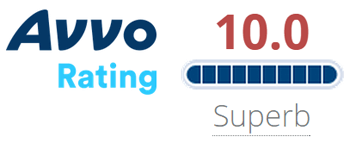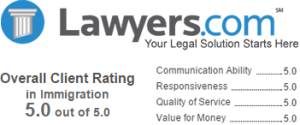Immigration Attorney Carl Shusterman testified as an expert witness before the Senate Subcommittee on Immigration. Below is a video of his Senate Testimony and the text version of his full testimony.
Client Reviews
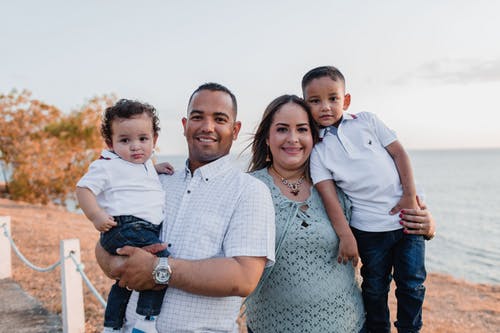
Go to a Law Firm which is Professional and Knowledgeable
“Very professional law firm. We had a difficult issue and Mr. Shusterman’s office got right onto the case and resolved the issue with USCIS. Because of their efforts, me and my family were able to get our Legal Permanent Residency card. My suggestion to those trying to obtain employment based card. Don’t look for money saving attorney. They will cost you lot more in long run. Go to a law firm which is professional and knowledgeable. It pays in the long term.”
- Nilesh Patel, Chicago, Illinois
Read More Reviews
Zoom Consultations Available!
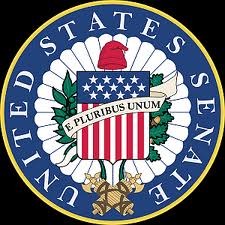
Testimony of Carl Shusterman
Before the Senate Subcommittee on Immigration
Regarding Urban And Rural Health Care Needs
Washington, D.C.
May 22, 2001
Mr. Chairman and Distinguished Members of the Subcommittee:
My name is Carl Shusterman, and I am the principal attorney in the Law Offices of Carl Shusterman in Los Angeles, California. I formerly served as a Trial Attorney with the Immigration and Naturalization Service and have practiced immigration law for over 25 years. I have written many articles regarding the immigration of nurses, physicians and other allied health care professionals to the United States. Some of my articles appear on the Internet at http://www.shusterman.com Our law firm represents both health care professionals and providers across the country.
I appreciate this opportunity to present my views on how our current immigration policy can be modified to result in improved health care for patients in both urban and rural areas.
Registered Nurses
1. Temporary “H-1C” Visas
U.S. immigration policy regarding registered nurses has become a contributing factor to our national shortage of nurses.
This was not always true. From 1952 to 1990, U.S. health care providers could quickly and easily obtain temporary “H-1” professional visas for foreign-born nurses. The employer filed a petition with the local INS office which approved it, and forwarded the approved petition to the U.S. Embassy in the nurses home country which issued a working visa to the nurse.
However, following the effective date of the Immigration Nursing Relief Act of 1989 (INRA), only hospitals with “attestations” certified by the Labor Department were permitted to petition for temporary “H-1A” status for nurses. Despite the stringent paperwork requirements imposed upon employers by the Labor Department, between 1990 and 1995, approximately 7,000 – 8,000 nurses entered the U.S. annually using temporary visas.
When INRA expired in 1995, a governmental commission recommended that the law be continued with certain modifications. Instead, the law was permitted to expire.
By 1997, the nurse shortage had begun to reappear, endangering the health of patients across the U.S. Representative Bobby Rush introduced legislation to allow 500 nurses to be sponsored by selected hospitals in medically underserved areas on temporary “H-1C” visas. Similar legislation was introduced in the Senate by Senator Durbin. This legislation was not enacted into law until two years later, on November 12, 1999, when the President signed the Nursing Relief for Disadvantaged Areas Act of 1999 (NRDAA). By that time, due to growing national shortage of nurses, the addition of 500 nurses per year to a workforce that exceeded one million nurses had become a woefully inadequate response to the problem.
Because of a long delay in the issuance of regulations by the Department of Labor, hospitals were unable to submit H-1C “attestations” until September 21, 2000. The regulations took the unusual step of listing 14 hospitals across the country that the Labor Department determined would be eligible to apply for attestations.
On March 27, 2001, the Labor Department indicated that nine hospitals had submitted attestations. The Department approved four of these attestations, denied one, and four were under review.
In fact, of the four hospitals whose attestations were under review, the Labor Department is currently attempting to deny the attestations of at least two of these hospitals. Even though these hospitals were on the Labor Department’s list of 14 qualified hospitals, the Department later determined that the hospitals were not located in medically underserved areas on the required date, March 30, 1997.
It is tragic that today, over 19 months after the passage of the law, not a single nurse has been able to obtain H-1C status.
This is because the INS has yet to issue regulations regarding H-1C nurses. In the absence of INS regulations, no H-1C petitions submitted by hospitals with attestations certified by the Labor Department may be approved nor may nurses apply for H-1C visas.
Clearly, the present H-1C nurse program is not viable.
2. Temporary “H-1B” Visas
Current immigration laws permit a total of 195,000 visas annually for persons in “a specialty occupation” and “fashion models…of distinguished merit and ability”. (8 U.S.C. §1101(a)(15)(H)(i)(b))
The law defines a “specialty occupation” as an occupation that requires the “attainment of a bachelor’s or higher degree in the specific specialty…as a minimum for entry into the occupation…” (8 U.S.C. §1184(i)(1))
Although many foreign-born registered nurses have attained a Bachelor of Science in Nursing (BSN) degree, most health care providers will hire staff nurses with a minimum of a 2-year degree.
Therefore, staff nurses do not qualify for H-1B visas.
3. Permanent Residence
Even though nurses remain ineligible for temporary visas, there is another way for health care providers to employ foreign-born registered nurses. Employers may petition for registered nurses to obtain permanent residence in the United States. Unfortunately, this has become a long and tedious process.
In order for a foreign-born registered nurse to have a petition submitted on her behalf, she must possess either a nursing license in the state of intended employment or have passed a test administered by a private organization, the Commission on Graduates of Foreign Nursing Schools (CGFNS). To obtain a state license, a nurse must pass the NCLEX examination that is administered by the National Council of State Boards of Nursing. Since this examination may only be taken in the United States, it is necessary for foreign nurses to obtain a visitors visa to enter the U.S. in order to take the examination. Since it is difficult for nurses in most third-world countries to obtain visitors visas from U.S. Embassies abroad to enter the U.S., few of them are able to take the NCLEX.
Instead, they must register with the CGFNS, months in advance, to take their examinations abroad. The CGFNS examination is not offered in all countries, and often nurses must travel considerable distances and incur significant expense in order to take the examination.
Once a nurse passes either of these two examinations, the prospective employer may then submit a petition to the INS. The employer must submit proof that the nurse has completed her nursing education and has passed either the NCLEX or CGFNS examinations. Depending on the location of the INS Service Center where the petition is submitted, it may take anywhere from three to eight months for the immigrant petition to be approved.
If the registered nurse is residing abroad, generally the approved petition is forwarded to the State Department’s National Visa Center (NVC). The NVC mails the nurse, or her attorney, a biographic form and a list of documents that must be presented to the U.S. Embassy or Consulate in her country at her immigrant visa interview. These documents include her birth certificate, police clearance(s), marriage certificate, medical examination, and various other documents. The NVC screens the forms for completeness and accuracy, and if they are completed properly, forwards them to the appropriate U.S. Embassy or Consulate abroad. This process may take several months.
In addition, there is the “VisaScreen” requirement. The VisaScreen certificate requirement was mandated by Congress as part of the Illegal Immigrant Reform and Immigrant Responsibility Act of 1996. Section 343 of that law requires that certain foreign-born health care workers obtain certification that their education, training, license and experience are equivalent to that of American workers, and that they take examinations to demonstrate their proficiency in the English language. Although this requirement is well-intentioned, for registered nurses, it duplicates requirements already imposed by state licensing authorities.
The VisaScreen requirement became effective on the day that the law was enacted, on September 30, 1996. This had the effect of preventing nurses from obtaining permanent residence in the U.S. until the INS issued regulations implementing this section of law, and the nurses were able to comply with these regulations.
For over two years after the passage of the law, the INS failed to issue VisaScreen regulations until, on October 14, 1998, confronted with several federal lawsuits, the agency issued regulations that became effective on December 14, 1998. Regulations for physical and occupational therapists were not issued until April 1999 while regulations for other health care workers were finally issued, pursuant to a settlement agreement reached under a federal lawsuit, earlier this year, four and one-half years after the 1996 law.
Many nurses and other health care workers have complained about the difficulties in communicating with the International Commission on Healthcare Professions (ICHP), the private agency designated by the INS to issue VisaScreen certificates. To say the ICHP acts slowly is an understatement. Furthermore, the INS takes the unreasonable position that even foreign-born nurses who are educated and trained in the United States must obtain a VisaScreen certificate to demonstrate that their education and training are equivalent to nurses educated and trained in the U.S.
Most foreign-born nurses immigrating to the U.S. are from the Philippines where there is an abundance of nursing schools, and where the language of instruction is English. There is a substantial backlog in obtaining permanent visas for registered nurses at the U.S. Embassy in Manila, Philippines. U.S. health care providers must often wait over 18 months to immigrate a nurse from the Philippines.
The present system requires that a nurse cannot be admitted to practice in the U.S. until she has cleared a multitude of bureaucratic hurdles. The result of the present system is long and unnecessary delays in processing visas for nurses. Something is clearly wrong when, despite the severe nationwide shortage of nurses, it is far easier to obtain a working visa for a fashion model than for a registered nurse.
Recommendations
If nurses trained abroad are to be part of the solution to the national shortage of registered nurses in the U.S., it is essential that Congress restore a temporary visa program to allow U.S. health care providers to bring nurses to the U.S. within a one to two-month period, rather than requiring them to wait up to 18 months to secure the services of these nurses.
To be effective, such a program should be available not only to a handful of hospitals, but to all health care providers in need. It should be streamlined to enable nurses to obtain visas to enter the U.S. in one to two months, and should only require health care providers and nurses to produce a minimum of documentation sufficient to insure that the health care needs of U.S. patients are being met, and that foreign-born nurses are being paid at a wage rate comparable to U.S. nurses working at the same facilities.
Physicians
The American public suffers not from a shortage of physicians, but from a maldistribution of existing physicians. Also, our system is producing too few primary care physicians.
Every year, the Secretary of Health and Human Services publishes a list of Health Professional Shortage Areas (HPSAs) located across the U.S. where the ratio of primary care physicians to patients is less than one physician to 3,500 patients. Virtually all states contain areas that are medically underserved. HHS has designated over 80% – 90% of some states as HPSAs. The list of HPSAs designated by HHS fills over 90 pages of the Federal Register in small print.
Since 1996, states have been permitted, under federal immigration laws, to sponsor up to 20 foreign-born, U.S.-trained physicians annually to work in HPSAs and other medically underserved areas. They work in these areas for three years. In exchange, they are granted the opportunity to apply for permanent residence in the U.S. once they have completed their work assignment. In the five years that the program has been in existence, at least 43 states have established such programs, thousands of physicians have participated, and hundreds of thousands of Americans have benefited. The number of HPSAs has been reduced, but only slightly. Allowing states the option of sponsoring 50 to 100 physicians annually would benefit many more Americans living in medically underserved areas, and the extra cost of administering the program would be minimal.
In 1999, Congress provided that certain foreign-born physicians who work in medically underserved areas or for the Veterans Administration for five years are eligible to apply for permanent residence through a National Interest Waiver of the usual Labor Department requirements. However, INS regulations, issued in September 2000, substantially reduced the scope of the law. For example, while the law provides that “any alien physician” is eligible for such a waiver, the regulations restrict the benefits of the law solely to physicians engaged in primary care. Also, while the law allows county and municipal health departments to write a letter certifying that the physician’s work is in the “public interest”, the regulations require that the letter may be written only by a state department of public health. The regulation imposes so many burdensome requirements upon employers of physicians as to lead one to conclude that the INS is actively trying to restrict the number of physicians who will be able to qualify for benefits under the law. Before the regulations become final, INS should be informed of something that every person that the agency naturalizes is required to know: The function of the executive branch is to enforce the laws written by Congress, not to amend those portions of the law with which the executive disagrees.
The immigration laws do not classify all physicians who wish to immigrate to the United States as “foreign medical graduates”. Persons who graduate from medical schools in Canada are generally not foreign medical graduates. While foreign medical graduates need to complete a medical residency in the U.S. and pass all three parts of the U.S. Medical Licensing Examination (USMLE) prior to obtaining permanent residence as a physician in the United States, Canadian graduates are not subject to either of these requirements. Almost 50% of Canadian medical graduates are primary care physicians, while in the U.S. there is a critical shortage of primary care physicians.
Canadian physicians are entitled to obtain medical licenses through reciprocity in 90% of U.S. states. However, an HHS regulation issued in the early 1990s requires Canadian physicians to pass all three parts of the USMLE examination as a condition of obtaining H-1B temporary working status. It takes most persons 12 to 18 months to study and pass all three parts of the USMLE examination. This regulation is outdated and sets the federal immigration laws at loggerheads with state licensing laws and with federal immigration laws which exempt Canadian physicians seeking permanent residence in the U.S. from taking the USMLE. Where the federal and the state governments work as partners, as with the State 20 program, referred to above, immigration laws serve the public interest.
Conclusion
The United States is in the midst of a severe nationwide nursing shortage, and our country’s supply of physicians is distributed in such a way that large areas of the U.S. are medically underserved. We also suffer from an undersupply of primary care physicians.
While changes in immigration laws will not, in themselves, solve the nursing crisis, the present immigration laws contribute to the crisis by creating protectionist walls that make it difficult for U.S. employers to hire foreign-born nurses. To help ease the nurse shortage, Congress should restore the system of temporary visas for registered nurses that worked so well between 1952 and 1995.
While there is no physician shortage comparable to the nursing shortage, much of the United States is classified as medically underserved by the Department of Health and Human Services. Also, the U.S. suffers from a severe shortage of physicians who practice primary care. Medical residency programs in the U.S. train thousands of international medical graduates. Congress has wisely decided to allow a portion of these physicians to remain in the U.S. if they work in medically underserved areas for a certain number of years. Such programs should be expanded, and states, counties and municipalities should all have a role in sponsoring physicians under federal immigration laws. Also, our immigration laws should encourage the immigration of primary care physicians to the United States.
Thank you for permitting me to testify on such a critically important subject.
Carl Shusterman
